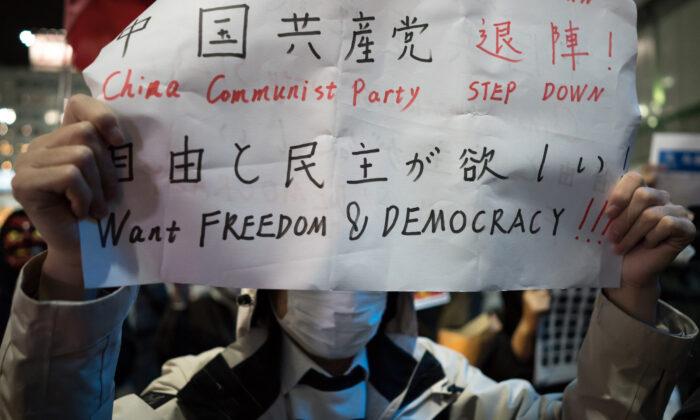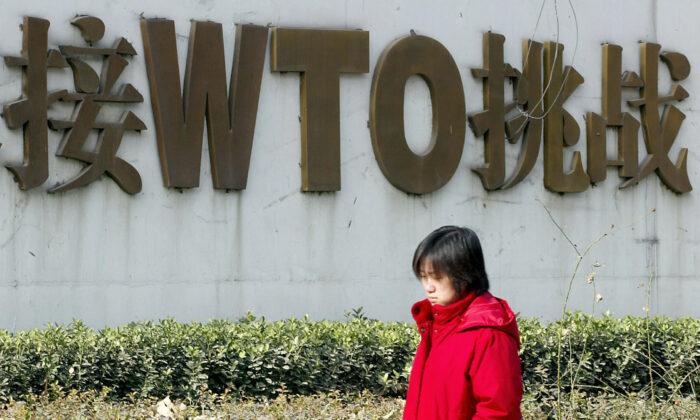China felt a bit relieved after Hong Kong’s “colour revolution” was subdued by the implementation of the national security law. However, last week after a fire in Urumqi, Xinjiang killed 10 in a residential building under lockdown, people in a dozen of Chinese cities went to the street to mourn the victims, and the mourning soon turned into protests, with slogans such as “Communist Party, step down!” and “Xi Jinping, step down!” being chanted in Shanghai.
Hence the White Paper Revolution, as the protesters hold up blank A4 papers to mock China’s draconian ban on free speech and COVID measures. Whether such protests will, in Mao Zedong’s words, “spark off a huge blaze” is yet to be determined, but their spontaneous appearance and lack of leadership gave the regime an advantage. The authorities acted fast to remove protest landmarks, speed up enclosing sites where protests had taken place, and even used tanks for deterrence. As a result, China had a quiet week after the brawling weekend.
However, as the movement has taken some shape, whither will it go, and what problems will it face? Perhaps some clues can be found in the symbolic meanings of “white paper.”
First, the original intention is to satirize the authorities’ deprivation of people’s freedom and their constant surveillance of speech. To achieve any success beyond this eye-catching move, protesters need to unite through effective propaganda. In a country where even Hu Jintao (former China leader, can become a sensitive phrase and be banned online, how should the protesters gain support and get around the cyber censorship? Using foreign apps such as Twitter, Telegram, and Dropbox over virtual private networks (VPNs) may be a way out, but it is all at the mercy of the regime, as VPN connectivity issues were reported after the nationwide protests last weekend. What took place at the same time was the emergence of a lot of Twitter posts on pornography and police brutality in the West being tagged with the keyword “Shanghai,” which means that the state machine acted fast to prevent the widespread posting of protest footage.
Second, “white paper” symbolizes the need to start from scratch. That China has a long revolutionary history does not mean that the protesters have naturally grasped the know-how of resistance. Every day the authoritarian regime tries hard to eliminate the people’s will and resources to fight. Chinese people know little about China’s recent protest history, not even the June 4 incident, not to mention more local ones such as the Wukan Village protest in Guangdong in which the village was sieged by police with the village leader sentenced to jail. Therefore, it will be a long time before the protesters can move beyond the single issue of COVID zeroing policy to a more mature protest movement that aims at shaping a democratic China.
Third, white is a colour. In other words, there is a possibility that the communists have it interpreted as a “colour revolution,” given the plenty of “evidence” already out there. Chinese protesters take inspiration from Hong Kong’s anti-extradition movement to such an extent that their movement looks like part of it: at least two mandarin versions of Glory to Hong Kong (the city’s protest song) during the 2019 anti-extradition movement have emerged, and at least two Hong Kong Cantopop songs have been used by the mainland Chinese as protest songs.
Hong Kong protest leader Nathan Law Kwun-chung wrote on Facebook that he received many “confessions” from mainland China, that those who had accused the Hong Kong protesters of trouble-makers apologized and admitted that they had wrongly believed in the communist propaganda. Such resumption of cordial ties may comfort the Hong Kong protesters, but it is also obvious evidence of flirting with “foreign forces’ that the Chinese regime would counterattack at an appropriate time. Borrowing Hong Kong’s resistance experience and slogans is a convenient start, but the Chinese need to make more effort to define their own.
Some Chinese have awakened, but they are only a tiny fraction of the Chinese population. If we use the late Qing Dynasty as an analogy, China now is quite like that in 1895 when it was suddenly awakened, by its unexpected defeat by Japan, followed by nationwide intellectual activities to urge for national salvation. How long it will take to have another 1911 revolution for a new China will be an issue that interests the Chinese observers.





